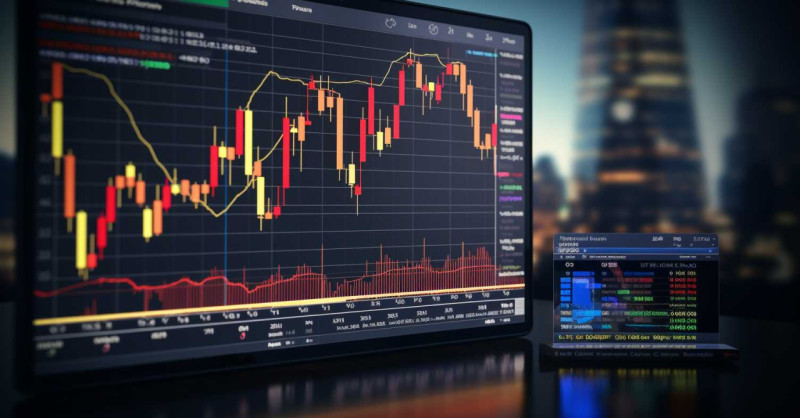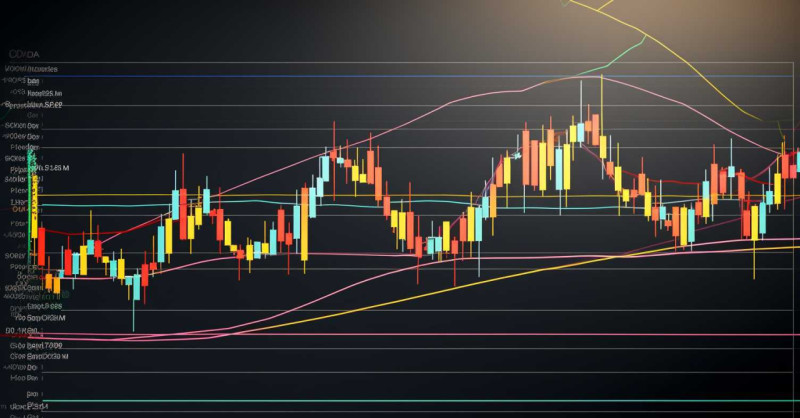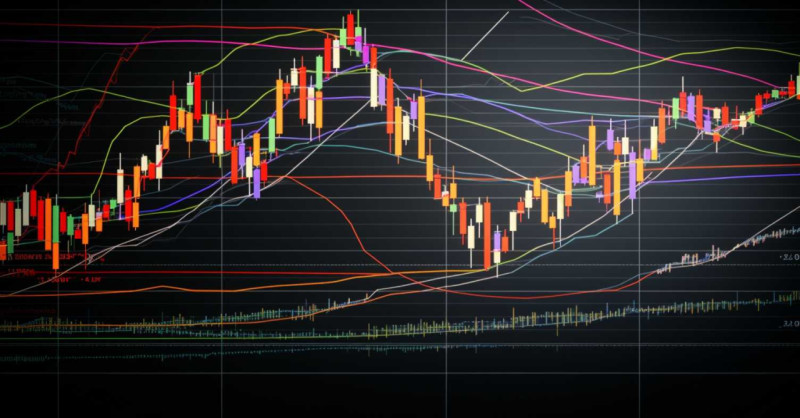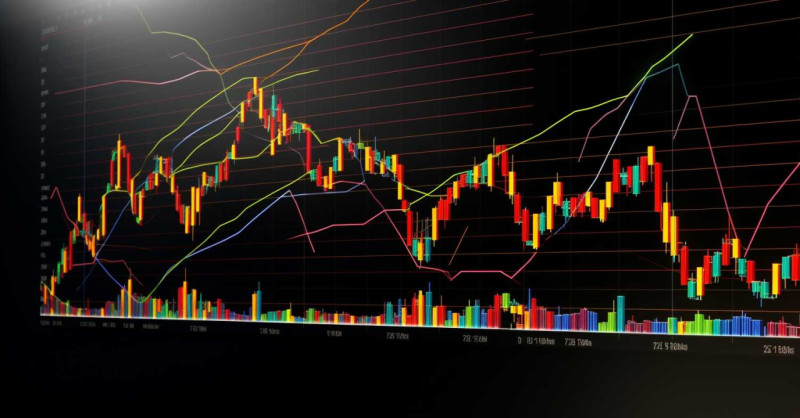
Introduction
Technical analysis is an indispensable tool in the world of trading, providing traders with valuable insights into market trends, identifying potential trading opportunities, and making informed trading decisions. It involves the analysis of historical price data, patterns, and indicators to predict future price movements and maximize profits. One prominent indicator used in technical analysis is the VWAP indicator, which stands for Volume-Weighted Average Price.
The VWAP indicator holds significant relevance in technical analysis as it calculates the average price at which a security has traded throughout the day, taking into account the volume traded at each price level. It serves as a benchmark for institutional traders and investors to assess the fairness of their executions and provides valuable information to retail traders regarding significant levels of trading activity and potential support/resistance zones.
In this comprehensive article, we will delve into the importance of technical analysis in trading and its profound impact on decision-making. We will introduce the VWAP indicator, exploring its calculation methodology and practical applications. Furthermore, we will guide you through the process of using the VWAP indicator in the popular MetaTrader platform, offering step-by-step instructions and customization options.
Additionally, we will explore various ways to apply the VWAP indicator in your trading strategy. You will learn how to utilize it as a confirmation tool for trade entries and exits, as well as its integration with other technical indicators to enhance analysis and improve trading outcomes. Real-world examples will be provided to illustrate the application of the VWAP indicator in different market conditions.
By the end of this article, you will have a comprehensive understanding of the importance of technical analysis, a thorough knowledge of the VWAP indicator and its functionalities in MetaTrader, and the ability to effectively incorporate it into your trading strategy. Let's begin this exciting journey to elevate your trading skills and maximize your potential for success.
What is the VWAP Indicator?
Definition of VWAP (Volume-Weighted Average Price)
The VWAP (Volume-Weighted Average Price) is a technical analysis indicator that calculates the average price at which a security has traded over a specific time period, weighted by the trading volume at each price level. Unlike a simple average, the VWAP considers the significance of trading volume in determining the average price.
The VWAP is calculated by multiplying the price of each trade by its corresponding volume, summing up these values, and dividing the total by the cumulative trading volume. This calculation ensures that trades with higher volume have a greater impact on the resulting average price.
The VWAP is often used on an intraday basis, such as calculating the average price over a trading session or specific time window. However, it can also be applied to longer timeframes, such as daily, weekly, or monthly periods, depending on the trader's preferences and objectives.
Traders and investors use the VWAP as a reference point to assess the fairness of their executions. It helps determine whether an asset is trading above or below its average price, providing insights into the prevailing market sentiment. The VWAP also serves as a benchmark for evaluating the performance of executed trades relative to the average price at which other market participants have transacted.
In summary, the VWAP is a volume-weighted average price indicator that provides traders with a measure of the average price at which a security has traded over a specific period. It incorporates trading volume to give more weight to trades with higher volume, making it a valuable tool for analyzing price trends, assessing market sentiment, and evaluating trade execution performance.

Explanation of how VWAP is calculated
The VWAP (Volume-Weighted Average Price) indicator is calculated by following these steps:
- Determine the time period: Choose the specific time period for which you want to calculate the VWAP. It can be an intraday session, a specific trading window, or any other desired timeframe.
- Multiply the price by the corresponding volume: For each trade within the chosen time period, multiply the price at which the trade occurred by the volume traded at that price level. This calculation gives more weight to trades with higher volume.
- Sum up the price-volume products: Add up the results obtained from multiplying the price by the volume for each trade within the chosen time period. This will give you the total sum of all the price-volume products.
- Calculate the cumulative volume: Sum up the trading volume for all the trades within the chosen time period. This provides the total cumulative volume.
- Divide the total sum by the cumulative volume: Divide the total sum of the price-volume products by the cumulative volume. This calculation yields the VWAP.
Mathematically, the formula for calculating the VWAP is as follows:
VWAP = (Σ (Price * Volume)) / Σ Volume
In this formula, Σ represents the summation symbol, Price represents the price of each trade, Volume represents the volume traded at each price level, and Σ Volume represents the cumulative trading volume.
By calculating the VWAP, traders can determine the average price at which a security has traded, weighted by the volume at each price level. This provides a valuable reference point for assessing the fairness of executions, analyzing price trends, and identifying potential support and resistance levels.
Importance of VWAP in analyzing price trends and market sentiment
The VWAP (Volume-Weighted Average Price) indicator holds significant importance in analyzing price trends and market sentiment for several reasons:
- Fair value assessment: The VWAP serves as a reference point for determining the average price at which a security has traded, weighted by trading volume. Traders compare the current price to the VWAP to assess whether the asset is trading at a premium or discount relative to the average. If the price consistently trades above the VWAP, it suggests bullish sentiment, while trading below the VWAP indicates bearish sentiment. The VWAP helps traders gauge fair value and identify potential opportunities to buy or sell.
- Trend identification: The VWAP indicator helps identify price trends by acting as a dynamic trend line. Traders analyze the relationship between the current price and the VWAP line to determine the prevailing trend. If the price remains consistently above the VWAP, it suggests an uptrend, while prices consistently below the VWAP indicate a downtrend. By incorporating the VWAP into trend analysis, traders can make informed decisions about trend-following or trend-reversal strategies.
- Support and resistance levels: The VWAP is widely used to identify significant support and resistance levels. As the VWAP is calculated based on trading volume, it represents areas where substantial trading activity has occurred. These levels can act as zones of support or resistance, influencing future price movements. Traders often consider buying near VWAP support levels and selling near VWAP resistance levels, as they represent areas of increased market interest.
- Market sentiment assessment: The VWAP provides insights into market sentiment based on the relationship between the current price and the VWAP line. When the price is consistently above the VWAP, it suggests positive sentiment and buying pressure. Conversely, prices below the VWAP indicate negative sentiment and selling pressure. By analyzing the positioning of the price relative to the VWAP, traders can gauge market sentiment and adjust their strategies accordingly.
- Volume analysis: Since the VWAP incorporates trading volume, it offers valuable information about volume patterns and liquidity. Traders can observe volume spikes around the VWAP, indicating increased market participation and potential areas of interest. Volume analysis in conjunction with the VWAP helps traders gauge the strength of price movements and assess the significance of price levels.
Overall, the VWAP indicator is a versatile tool for analyzing price trends, assessing market sentiment, and identifying support and resistance levels. It helps traders make informed trading decisions by providing insights into fair value, trend direction, and potential trading opportunities. Incorporating the VWAP into technical analysis enhances the understanding of market dynamics and improves the accuracy of trading strategies.

Understanding the Role of VWAP Indicator in Technical Analysis
VWAP as a measure of fair value in the market
The VWAP (Volume-Weighted Average Price) indicator is widely regarded as a reliable measure of fair value in the market. It provides traders with valuable insights into the average price at which a security has traded, taking into account the volume traded at each price level.
By incorporating trading volume into the calculation, the VWAP gives more weight to trades with higher volume. This weighting factor ensures that the indicator reflects the significance of each price level based on the trading activity associated with it. As a result, the VWAP provides a more accurate representation of the average price compared to a simple arithmetic average.
Traders use the VWAP as a benchmark for assessing fair value and determining whether the current price of a security is trading above or below the average. If the price is consistently trading above the VWAP, it suggests that the security may be overvalued or experiencing bullish sentiment. On the other hand, if the price consistently trades below the VWAP, it indicates potential undervaluation or bearish sentiment.
The VWAP serves as a point of reference for traders to evaluate the attractiveness of current prices in relation to the average traded price. When the price is above the VWAP, it may imply that buying pressure has outweighed selling pressure, making the current price relatively high. Conversely, when the price is below the VWAP, it may indicate that selling pressure has outweighed buying pressure, resulting in a relatively low price.
By considering the VWAP as a measure of fair value, traders can make informed decisions regarding the timing of their trades. They may choose to buy when the price is trading below the VWAP, anticipating a potential price increase towards the average. Similarly, they may consider selling when the price is trading above the VWAP, anticipating a potential price decrease towards the average.
Overall, the VWAP acts as a valuable tool for assessing fair value in the market. Traders rely on it to gain insights into whether a security is trading above or below its average price, helping them make informed decisions about potential opportunities and market conditions.
Identifying price trends and market reversals using VWAP
The VWAP (Volume-Weighted Average Price) indicator is a valuable tool for identifying price trends and potential market reversals. Traders analyze the relationship between the current price and the VWAP to gain insights into the prevailing market dynamics.
When the price consistently trades above the VWAP, it suggests an uptrend in the market. This indicates that buying pressure is strong, as prices are generally higher than the average traded price. Traders interpret this as a signal to look for opportunities to buy or hold positions, expecting the upward momentum to continue.
Conversely, when the price consistently trades below the VWAP, it indicates a downtrend. This suggests that selling pressure is dominant, as prices are generally lower than the average traded price. Traders view this as a signal to consider selling or shorting positions, anticipating further downward movement.
The VWAP can also assist in identifying potential market reversals. When the price significantly deviates from the VWAP, it may indicate an overextended condition and a potential reversal in the trend. Traders look for situations where the price moves away from the VWAP, suggesting that it has deviated too far from the average. This divergence may trigger a mean reversion or a change in market sentiment, leading to a potential reversal in the price trend.
By monitoring the price's relationship with the VWAP, traders can effectively gauge the prevailing trend and make informed decisions about their trading strategies. The VWAP serves as a dynamic reference point that helps identify whether the market is exhibiting an uptrend, a downtrend, or potential reversal signals. Traders can align their trading positions and strategies with the identified trends or reversals to capitalize on potential profit opportunities.

VWAP as a support and resistance level indicator
The VWAP (Volume-Weighted Average Price) indicator also serves as a reliable support and resistance level indicator in technical analysis. As the VWAP is calculated based on trading volume, it represents areas of significant trading activity and market interest.
In an uptrend, the VWAP often acts as a support level. As the price approaches the VWAP from below, it may find buying interest and bounce off the VWAP, indicating that traders see value in the security at or near the average price. The VWAP as a support level reinforces its significance, and traders may consider it a potential area to enter long positions or to tighten stop-loss levels.
Similarly, in a downtrend, the VWAP can act as a resistance level. When the price approaches the VWAP from above and encounters selling pressure, it suggests that traders perceive the average price as a level to sell or take profit. The VWAP acts as a resistance level in this scenario, indicating a potential area where selling pressure outweighs buying pressure.
Traders use the VWAP support and resistance levels as points of reference for their trading decisions. When the price nears the VWAP support level, it may present an opportunity to enter long positions or add to existing ones, anticipating a potential price bounce. Conversely, when the price nears the VWAP resistance level, it may indicate a chance to consider taking profits or opening short positions, expecting a potential price reversal or resistance to further upward movement.
The VWAP support and resistance levels derived from the indicator's calculation provide traders with valuable information about areas where significant trading activity has occurred. These levels reflect market sentiment and the collective actions of traders. By incorporating the VWAP as a support and resistance level indicator, traders can make more informed decisions regarding their trade entries, exits, and risk management strategies.
Using the VWAP Indicator in MetaTrader Platform
Introduction to MetaTrader and its capabilities
MetaTrader is a widely used trading platform known for its comprehensive features and user-friendly interface. It is available in two versions: MetaTrader 4 (MT4) and MetaTrader 5 (MT5), both offering powerful tools for traders across various financial markets.
MetaTrader provides a range of capabilities that facilitate efficient trading and analysis. Here are some key features:
- Market Access: MetaTrader allows traders to access a wide range of financial markets, including forex, stocks, commodities, indices, and cryptocurrencies. It offers real-time market data and access to multiple liquidity providers, enabling traders to execute trades at competitive prices.
- Charting and Analysis: The platform offers advanced charting capabilities with a variety of timeframes and chart types. Traders can apply technical indicators, including the VWAP, moving averages, oscillators, and trend lines, to analyze price data and identify trading opportunities. It also provides tools for drawing shapes, adding annotations, and conducting in-depth technical analysis.
- Trade Execution: MetaTrader enables traders to execute trades directly from the platform. It supports market orders, limit orders, stop orders, and other order types. Traders can set stop-loss and take-profit levels to manage risk and automate trade management. The platform also supports one-click trading for fast and efficient order placement.
- Automated Trading: MetaTrader features a built-in programming language called MQL (MetaQuotes Language). Traders can develop and implement their own automated trading strategies using expert advisors (EAs). These EAs can execute trades based on pre-defined rules and conditions, providing a systematic approach to trading.
- Backtesting and Optimization: Traders can test their trading strategies using historical data through the platform's built-in strategy tester. This allows for the evaluation of strategy performance, fine-tuning of parameters, and optimization to enhance trading results.
- Mobile Trading: MetaTrader offers mobile applications for iOS and Android devices, allowing traders to access their accounts and trade on-the-go. Mobile trading provides flexibility and convenience, ensuring that traders can monitor markets and execute trades from anywhere at any time.
MetaTrader's robust capabilities make it a preferred choice for traders worldwide. Its user-friendly interface, extensive technical analysis tools, and flexibility for automated trading cater to the needs of both beginner and experienced traders. With MetaTrader, traders have access to a comprehensive platform that empowers them to analyze markets, execute trades, and manage their trading activities effectively.

Step-by-step guide on adding the VWAP indicator to MetaTrader
Adding the VWAP (Volume-Weighted Average Price) indicator to your MetaTrader platform is a straightforward process. Follow these steps:
- Open MetaTrader: Launch the MetaTrader platform on your computer.
- Choose a Chart: Select the desired financial instrument or symbol you want to analyze by clicking on its corresponding chart.
- Click on "Insert" in the Menu Bar: In the top menu bar, click on the "Insert" tab.
- Select "Indicators": From the dropdown menu that appears, select "Indicators" to access the list of available indicators.
- Navigate to "Volumes": Within the Indicators submenu, locate and click on "Volumes" to expand the options related to volume-based indicators.
- Choose "Volume Weighted Moving Average (VWMA)": From the expanded options, select "Volume Weighted Moving Average (VWMA)" to add the VWAP indicator to your chart.
- Configure the VWAP Indicator: A settings dialog box will appear. Adjust the parameters as needed, such as the time period for calculating the VWAP and any additional customization options available.
- Confirm and Apply: Once you have configured the desired settings, click the "OK" button to apply the VWAP indicator to the chart.
- Analyze the VWAP Line: The VWAP line will now be displayed on your chart, reflecting the volume-weighted average price over the specified time period. You can analyze the relationship between price and the VWAP to gain insights into market trends, potential support/resistance levels, and market sentiment.
Remember to refer to the MetaTrader platform's user guide or documentation for any specific details or variations that may exist based on the version you are using. Customization options and indicator settings may vary slightly between MetaTrader 4 (MT4) and MetaTrader 5 (MT5), so ensure you are familiar with the specific platform version you are working with.
By adding the VWAP indicator to MetaTrader, you can benefit from its insights into average price, volume dynamics, and potential trading opportunities.
Customization options and settings for the VWAP indicator in MetaTrader
MetaTrader provides various customization options and settings for the VWAP (Volume-Weighted Average Price) indicator. These options allow traders to adapt the indicator to their specific preferences and trading strategies. Here are some common customization options available in MetaTrader:
- Time Period: Adjusting the time period allows you to specify the duration over which the VWAP is calculated. This can be done based on your trading style and the timeframe you are analyzing. For example, you can set the VWAP to calculate based on the intraday session or a specific number of bars.
- Color and Style: MetaTrader allows you to customize the color and style of the VWAP line to suit your visual preferences and chart aesthetics. You can choose different colors, line thickness, and line styles (solid, dashed, dotted) for the VWAP line.
- Calculation Settings: Depending on the version of MetaTrader you are using, you may have additional settings related to the calculation of the VWAP. These settings can include options for adjusting the weighting method, such as choosing between typical price, high-low range, or closing price, and selecting the volume type (tick volume, real volume, etc.).
- Levels and Bands: Some versions of MetaTrader allow you to add additional levels or bands to the VWAP indicator. These can include standard deviation bands or moving averages derived from the VWAP line. These levels and bands can provide additional insights and signals for traders.
- Alerts and Notifications: MetaTrader offers the ability to set up alerts and notifications based on the VWAP indicator. You can create custom alerts to be notified when the price crosses the VWAP line or when specific conditions related to the VWAP are met. This feature allows you to stay informed of potential trading opportunities without continuously monitoring the chart.
It is important to note that customization options and settings may vary between different versions of MetaTrader (MT4 and MT5) and the specific indicators provided by your broker or third-party developers. Therefore, it is recommended to refer to the platform's user guide or documentation for detailed instructions and options specific to your MetaTrader version.
By customizing the VWAP indicator in MetaTrader, traders can adapt it to their trading style and preferences. This customization enhances the effectiveness of the indicator, enabling traders to gain valuable insights into market dynamics, support/resistance levels, and potential trading opportunities.

Applying the VWAP Indicator in Your Trading Strategy
Using VWAP as a confirmation tool for trade entries and exits
The VWAP (Volume-Weighted Average Price) indicator can serve as a valuable confirmation tool for trade entries and exits. By comparing price movements to the VWAP, traders can gain additional insights into the strength of a trend or the potential exhaustion of a move. Here's how to use the VWAP as a confirmation tool:
Trade Entry Confirmation: When considering a trade entry, traders can look for the price to move in the same direction as the VWAP. For example, in an uptrend, traders may wait for the price to pull back to or bounce off the VWAP before entering a long position. This confirms that the price is still supported by the average traded price and strengthens the validity of the trade setup.
Trade Exit Confirmation: When managing an existing trade, the VWAP can help determine when to exit a position. Traders can consider closing a long position if the price consistently trades below the VWAP in a downtrend, indicating potential weakness. Conversely, in an uptrend, a consistent move above the VWAP may signal potential strength and a reason to hold onto the position.
Using the VWAP as a confirmation tool helps traders align their trades with the prevailing trend and market sentiment, enhancing the accuracy of trade entries and exits.
Incorporating VWAP with other technical indicators for enhanced analysis
The VWAP indicator can be effectively combined with other technical indicators to provide enhanced analysis and trading signals. Here are a few examples of how to incorporate the VWAP with other indicators:
Moving Averages: Combine the VWAP with other moving averages, such as the 50-day or 200-day moving average. The crossing of the VWAP and these moving averages can generate signals for trend changes or trend continuation.
Relative Strength Index (RSI): Use the RSI indicator in conjunction with the VWAP to identify overbought or oversold conditions. If the price is above the VWAP and the RSI is in overbought territory, it may suggest a potential reversal or pullback.
Bollinger Bands: Combine Bollinger Bands with the VWAP to identify volatility contractions and expansions. When the price moves outside the Bollinger Bands and aligns with the VWAP, it may signal a potential breakout or trend continuation.
By combining the VWAP with other indicators, traders can gain a comprehensive understanding of market conditions, identify potential trading opportunities, and increase the probability of successful trades.

Examples of trading strategies utilizing VWAP indicator in different market conditions
The VWAP indicator can be incorporated into various trading strategies, adapting to different market conditions. Here are a few examples:
Trend Following Strategy: In an uptrend, traders can use the VWAP as a support level. They may enter long positions when the price pulls back to the VWAP and shows signs of a bounce. Similarly, in a downtrend, the VWAP can act as a resistance level, providing opportunities to enter short positions when the price approaches the VWAP from above.
Breakout Strategy: Traders can combine the VWAP with other indicators, such as Bollinger Bands. They may wait for the price to break out of the Bollinger Bands and confirm the breakout by aligning with the VWAP. This strategy aims to capture strong price moves after periods of low volatility.
Reversal Strategy: Traders can look for reversals when the price significantly deviates from the VWAP. If the price has moved far away from the VWAP and shows signs of exhaustion or divergence, it may indicate a potential reversal opportunity.
It's essential to test and adapt these strategies to suit your trading style and risk tolerance. Additionally, consider incorporating risk management techniques, such as setting stop-loss orders and defining target levels, to manage potential risks and protect profits.
By utilizing the VWAP indicator in different trading strategies, traders can capitalize on various market conditions and increase their chances of making profitable trades. However, it is crucial to conduct thorough analysis, practice proper risk management, and continually refine the strategies based on market observations and personal experience.
Best Practices for Using the VWAP Indicator
Considerations for selecting the appropriate timeframes
When using the VWAP (Volume-Weighted Average Price) indicator, selecting the appropriate timeframe is crucial for accurate analysis. Here are some considerations to keep in mind:
Trading Style: Consider your trading style and objectives. If you are a day trader, you may focus on shorter timeframes, such as 15 minutes or 1 hour, to capture intraday price movements. For swing or position traders, longer timeframes like daily or weekly may be more suitable.
Market Volatility: Take into account the volatility of the market you are trading. Higher volatility markets may require shorter timeframes to capture price swings, while lower volatility markets may warrant longer timeframes to filter out noise.
Asset Class: Different asset classes have varying levels of liquidity and trading volume. Consider the liquidity of the asset you are trading and select a timeframe that aligns with the market's trading characteristics.
Experimentation and Backtesting: It's essential to experiment with different timeframes and conduct backtesting to determine which timeframe provides the most reliable signals and aligns with your trading strategy.
Tips for interpreting VWAP in different market scenarios
Interpreting the VWAP indicator requires a nuanced understanding of different market scenarios. Here are some tips for interpreting the VWAP in various market conditions:
Trending Markets: In trending markets, the VWAP can act as a dynamic support or resistance level. If the price consistently trades above the VWAP in an uptrend, it suggests strength and potential buying opportunities on pullbacks to the VWAP. In a downtrend, if the price consistently trades below the VWAP, it signals weakness and potential selling opportunities on rallies to the VWAP.
Ranging Markets: In range-bound or sideways markets, the VWAP can help identify potential reversal points. Traders may look for the price to approach the VWAP from either above or below and observe how it reacts. Reversal signals may occur when the price bounces off the VWAP or fails to break through it.
Volatile Markets: During periods of high volatility, the VWAP can act as a guide for assessing price stability. Sharp deviations from the VWAP may indicate extreme volatility or overextension, potentially leading to mean reversion or trend reversals.
Volume Confirmation: Consider volume patterns alongside the VWAP. Higher trading volume near the VWAP may validate its significance as a support or resistance level, while low volume may suggest weak support or resistance.

Importance of combining VWAP with other technical analysis tools
While the VWAP is a powerful indicator on its own, combining it with other technical analysis tools can enhance the accuracy of your analysis. Here's why it's important to combine the VWAP with other tools:
Confirmation of Signals: Using additional indicators can provide confirmation and increase the confidence in your trading decisions. For example, combining the VWAP with trend lines, moving averages, or oscillators can validate potential trade setups.
Increased Precision: Other technical analysis tools can help pinpoint entry and exit levels more precisely. Combining the VWAP with support/resistance levels, Fibonacci retracements, or chart patterns can offer more specific price levels to consider.
Diverse Perspectives: Different indicators provide different perspectives on the market. Combining the VWAP with other tools allows you to gain a broader understanding of market dynamics, trends, and potential reversals.
However, it's important not to overload your analysis with too many indicators. Select a few complementary tools that align with your trading strategy and provide meaningful insights.
By combining the VWAP with other technical analysis tools, you can enhance your understanding of market conditions, validate trading signals, and increase the accuracy of your trading decisions. Experimentation and practice are key to finding the right combination of indicators that work best for your trading style and objectives.
Conclusion
In this article, we explored the VWAP (Volume-Weighted Average Price) indicator and its relevance in technical analysis. We began by highlighting the importance of technical analysis in trading and introduced the VWAP indicator as a valuable tool for analyzing price trends and market sentiment.
We delved into the definition of VWAP, explaining how it is calculated by weighting the average price by trading volume. The VWAP serves as a measure of fair value in the market and helps traders assess whether a security is trading at a premium or discount relative to the average.
Understanding the role of the VWAP indicator in technical analysis, we discussed how it can be used to identify price trends, market reversals, and support/resistance levels. The VWAP acts as a dynamic trend line, allowing traders to make informed decisions about trend following or trend reversal strategies.
Moving on to the practical application of the VWAP indicator, we explored how to use it in the MetaTrader platform. We provided a step-by-step guide on adding the VWAP indicator to MetaTrader and highlighted the importance of customizing its settings to suit individual preferences.
Furthermore, we discussed the best practices for using the VWAP indicator in trading strategies. This included considering the appropriate timeframes, interpreting the VWAP in different market scenarios, and emphasizing the importance of combining the VWAP with other technical analysis tools for enhanced analysis.
In conclusion, incorporating the VWAP indicator in your trading strategies offers several benefits. It helps in assessing fair value, confirming trade entries and exits, and providing insights into market trends and sentiment. However, to effectively utilize the VWAP, it is essential to practice and gain experience in its application. This will allow you to refine your trading strategies and adapt them to different market conditions.
As with any trading tool, it is important to remember that the VWAP indicator is not a guaranteed predictor of future price movements. It should be used in conjunction with other forms of analysis, risk management techniques, and consideration of broader market factors.
With continued practice and experience, integrating the VWAP indicator into your trading arsenal can enhance your decision-making process and increase the overall effectiveness of your trading strategies.





